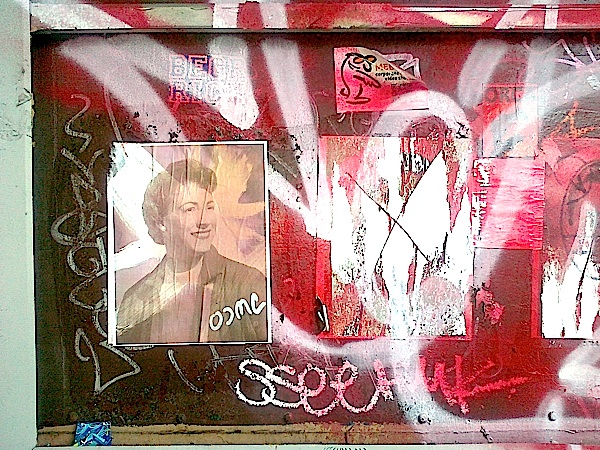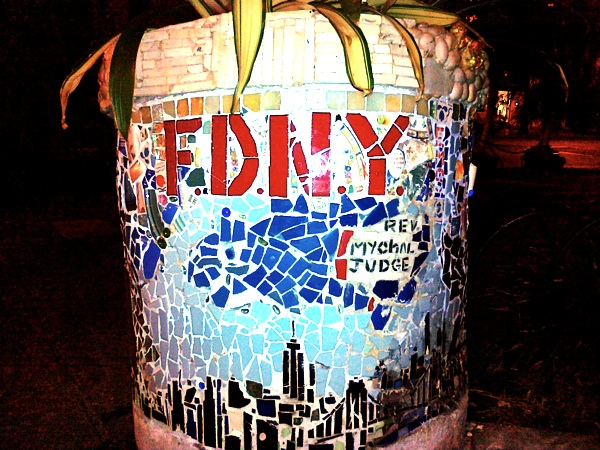Magazines
1. Village Voice: http://www.villagevoice.com/
2. New York Magazine: http://nymag.com/
3. Time Out New York: http://newyork.timeout.com/
4. The L Magazine: http://www.thelmagazine.com/
1-3. Any of the above magazines is a good choice for keeping yourself up-to-date on NYC’s pulsating life and will help you spot events, places, sales and shopping excuses, and news on the city’s haves and have-nots. Basically, they all aim at the same set of a young, fun-loving, educated audience, residents and tourists alike, with an emphasis on the hipper quarters of Manhattan, Brooklyn and Queens. Guiding you with view to New York’s club life, fashionable rooftop bars and basement waterholes, you will easily get a fair knowledge of NYC’s eternal 80s revival and the finest in DJ culture within city limits, know where to go during fashion week and which unmarked door next to an unfashionable side street corner store holds a hidden dining room or a prohibition era speakeasy (you will have to figure out yourself the knocking pattern, though), why hipsters suck and New York City under Bloomberg still remains the capital of the world – despite all the pacifying and gentrifying which has taken place in the last decade.
4. I’ve never used this magazine during my time in the city, but it seems to appeal to an artsy and cutting-edge clientele the same way the others do, and perhaps its name is most catchy among them with the queer folk. To me, choosing any of the magazines over one another is pretty much only a matter of personal preference; you will find all the news you need and more in any of them including the juicy stories and sex columns of Village Voice’s Dan Savage, the bloggings on theatre and playwrights in L Magazine, Time Out’s well-structured schedules and categories on events and activities to do (and not to be missed!) in New York, and NY Magazine’s somewhat articulated stint at the underground in favour of high culture and high society. Combine either two of them, and your stay in New York is guaranteed to be full of opportunities, overwhelming night and day life and, sadly, all too many missed chances. There is just too much to do in a city that never sleeps.
Blogs
1. Not for Tourists: http://www.notfortourists.com/newyork.aspx
2. Brooklyn Vegan: http://www.brooklynvegan.com/
3. Gothamist: http://gothamist.com/
1. Insiders know best, and if you are looking for some surf action or lonely beach walking, the local favourite deli-joint or just accurate, reliable neighbourhood portraits including maps, and places preferably not overrun by tourists in general, NFT is the perfect starting point for your research. Articles are written by natives and residents, clear and up-front, and though their tartly comments sometimes come across rude (this is NYC, after all), they get down to the facts effectively, without cutting slack. Spicey, straight, uncompromising – a safe bet for insights into the lesser-known parts of the city, its highlights, and the hot shit (aka faex calesca). Don’t miss out on New York’s narrative and first-hand knowledge and join the esoterics and city-dwellers from within New York City. With your i-prefixed cell phone, you can even navigate while on the walk.
2. Brooklyn Vegan functions as your source for information on concerts and parties at night, particularly if indie, electro and Balkan music is your cup of tea, and it also offers effective news on genres outside mainstream hipsterdom such as rock, metal or house. Do not expect anything too outragous or adventurous here, though, as there are plenty of newsletters, Yahoo groups and secretive lists on the experimental and underground which don’t principally cater to an audience in its late teens, early twenties. Hence you won’t find yourself at an illegal warehouse rave if you solely depend on Brooklyn Vegan. Word of mouth and a network of close and not-so-close friends in your favourite spots will prove more rewarding in this instance, just as a few web-based links on the ever-so insatiable Scylla of social networking sites. Make up a name and fake profile and benefit from the savvyness of the Youtube and Last.fm generation. Also, you may be able to fetch discounts and guestlist spots here time and again.
3. Gothamist tends to take a much brighter look at the city than the DC Comics-inspired nickname may suggest. (Actually, Washington Irving was the first in 1807 to refer to Manhattan as Gotham, but the imagery, architecture and gritty atmosphere often associated with NYC, particularly in movies and artifacts relating to the 1970s and 1980s, strongly corresponds to the image of the metropolis going by this name which is also home to Batman.) Here, you will find extensive food reviews and restaurant recommendations throughout the city, along with cooking recipes, cocktail mixology and formulas and tips on healthy servings. Next to a charming obsession with subsistence and nutrition, it also offers delightful news on arts and entertainment, galleries and exhibitions, dating and local politics (OWS, for instance, as of late), with a lacing of celebrity gossip, blurps on New York’s social circles and light-hearted sports columns. There is nothing too deep and serious about this enjoyable blog, but it will consistently point you to the right direction as regards the cinema, culture and cuisine of The Big Apple.
Indispensable for food & catering
1. Menu Pages: http://www.menupages.com/changecity/newyork
2. Zagat: http://www.zagat.com/newyork
1-2. While you will find many restaurants and food joints in New York City Zagat-rated and the Zagat survey considered indispensable by many distinguished New Yorkers, most often you will rather stumble across a Zagat decal by chance, noticing it at the storefront from inside-out, while looking out and observing the buzzling life and busy streets of Manhattan. An ex post facto if there was ever one, and hence a bit of gambling if you go by older accolades – which rarely get removed from shop windows or front doors – or the Zagat guide you snatched at the hotel reception or local bookstore. If you care to prepare for a restaurant visit in the evening or a bar night with friends or business partners, Menu Pages, which has recently been acquired by Seamless, will at minimum prove a valuable side and provide you with free general information on restaurants, bars and lounges alike. Currently, the directory is listing more than 35,000 menus and close to 175,000 user-generated reviews, made available online for free, for both mobile and home-computing. Your smartphone thus will guide you to the next hot spot or top-notch neighbourhood tavern and avert you from ending up at a dive bar with your guest from Singapore instead of the hippest club in town with the same name next door.

